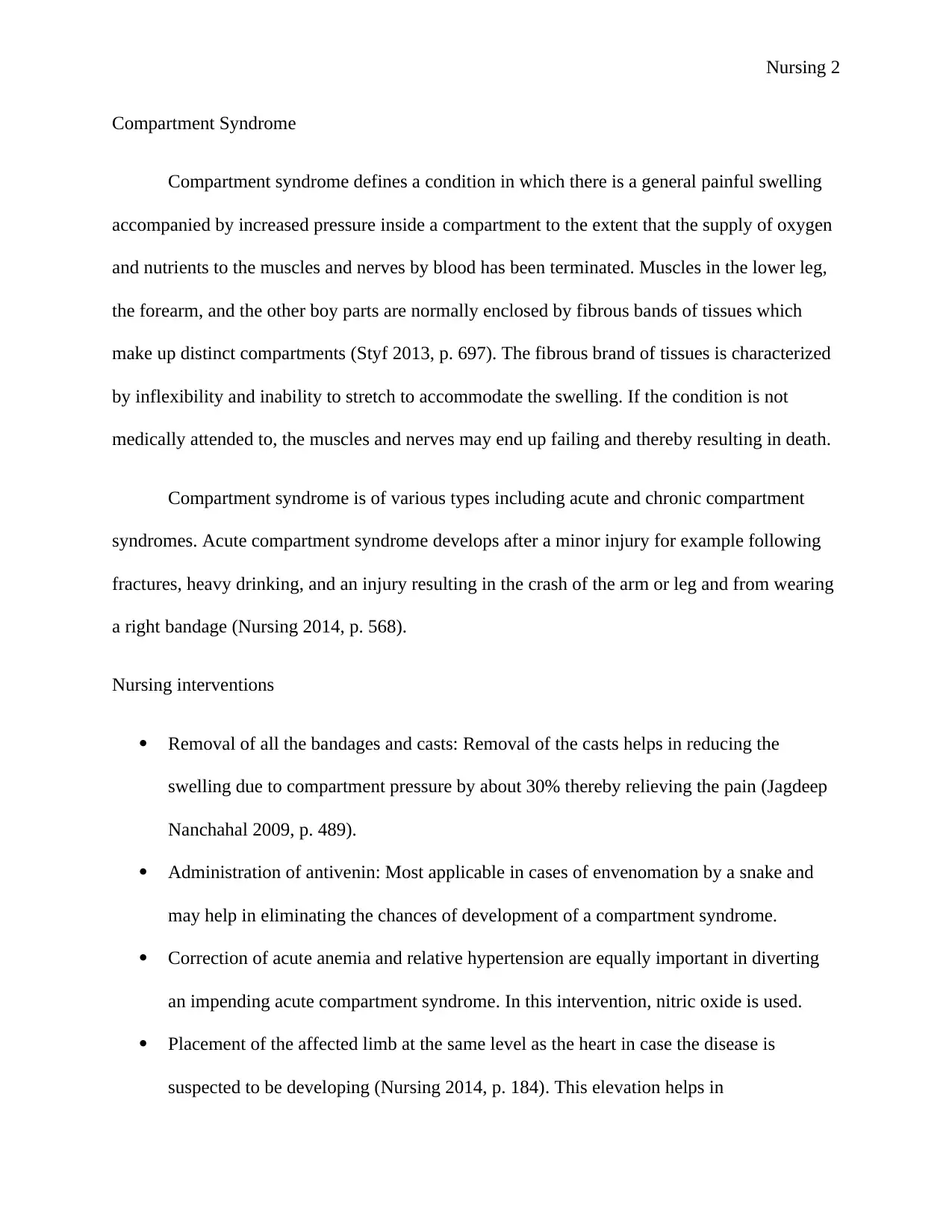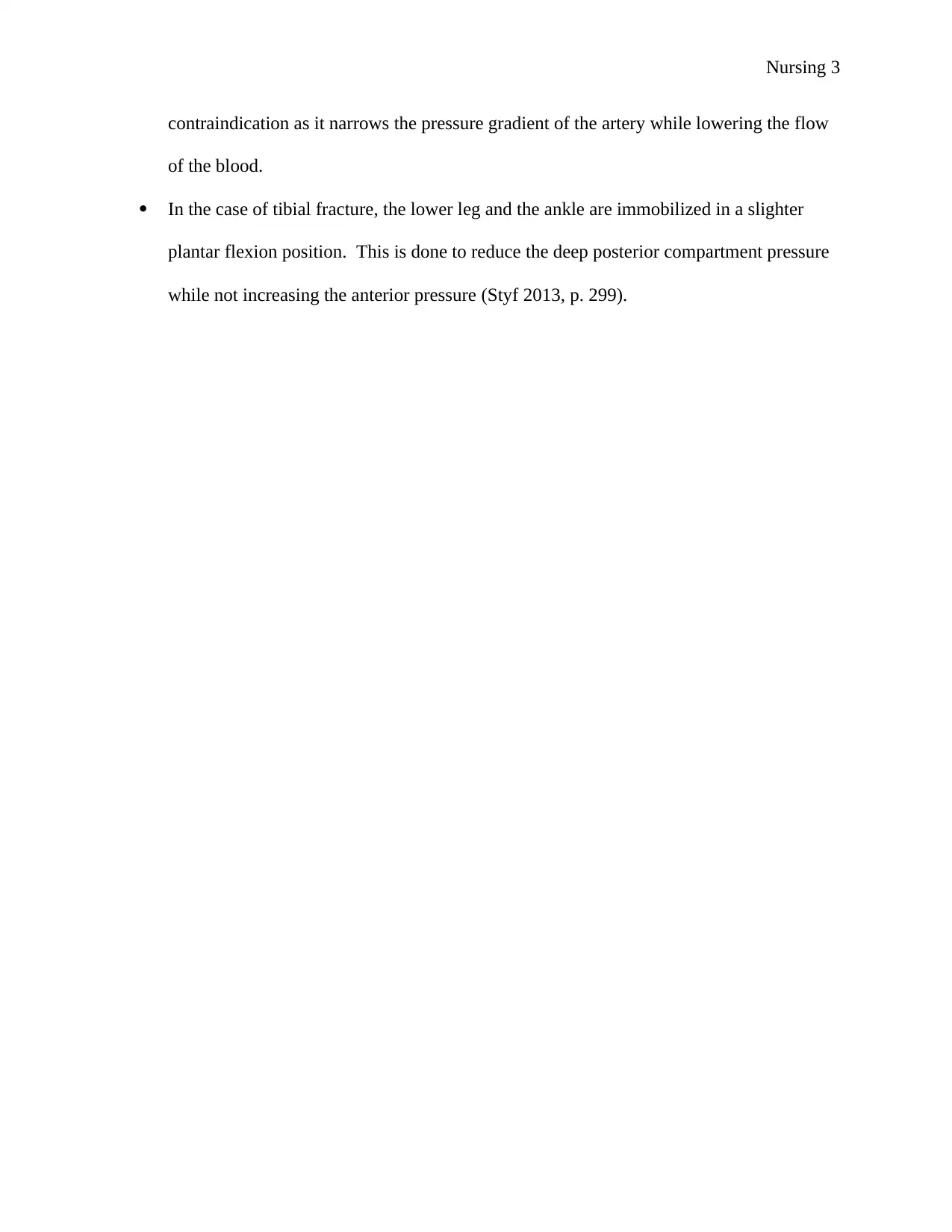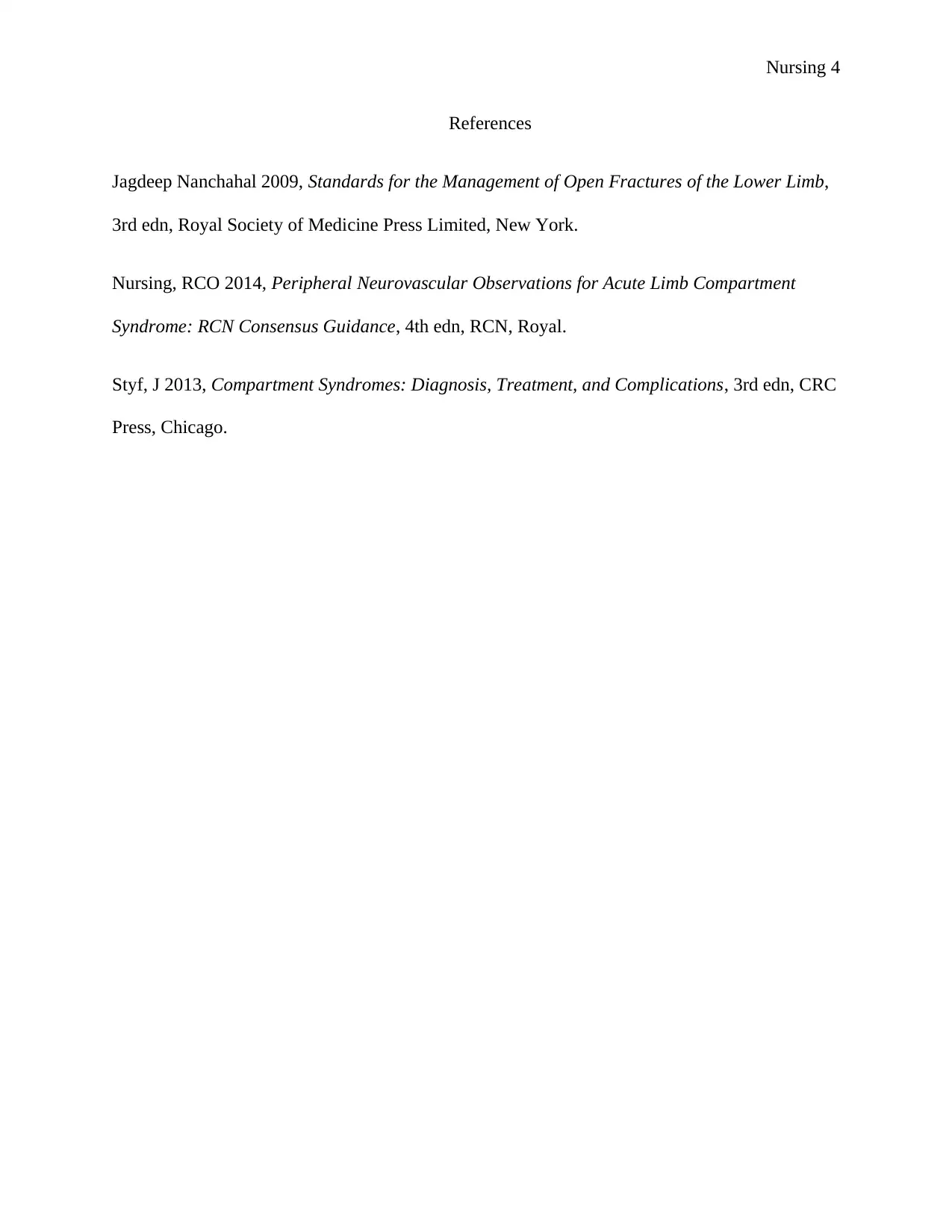Nursing 2: Comprehensive Report on Compartment Syndrome Management
VerifiedAdded on 2020/02/18
|4
|453
|37
Report
AI Summary
This report, focusing on Nursing 2, delves into compartment syndrome, a condition characterized by increased pressure within muscle compartments, potentially leading to tissue damage. The report discusses the causes, symptoms, and various types of compartment syndrome, including acute cases. It highlights essential nursing interventions, such as removing bandages and casts to reduce pressure, administering antivenin in cases of envenomation, correcting anemia and hypertension, and positioning the affected limb to optimize blood flow. The report references key sources like Jagdeep Nanchahal, RCN, and Styf to provide a comprehensive understanding of the condition and its management. The report covers the interventions for compartment syndrome and the importance of proper patient care and treatment.
1 out of 4











![[object Object]](/_next/static/media/star-bottom.7253800d.svg)